
Issue #: 163
Published: January / February 2019
- Price per issue - digital : 6.50€Digital magazine
- Price per issue - print : 7.90€Print magazine
- Access to Multihulls World digital archives Digital archives
It’s 6am… a morning just like any other.
The sky and its clouds are reflected in the calm sea, in a perfectly silent ambience.
Pearls of water glisten on the deck, chilled by the freshness of night. I scan the horizon of the bay. There’s a knot in my stomach. I’m both sad and excited. Today I’m leaving New Caledonia on a long trip.
Two years ago I returned from my first round the world trip with my parents, with the knowledge that I could never settle for ever on land. The sea had won my heart, as it had my father and mother after our amazing experience which had brought us so close together. Thanks to their desire, patience and courage – qualities which no one could deny that they have in bucketloads- we lived out a dream trip around the world, and they gave me the best childhood possible. I’ll never be able to thank them enough… Although we are not always together now, but we are all still living out our maritime dreams. No doubt we will meet up one day in some idyllic anchorage…
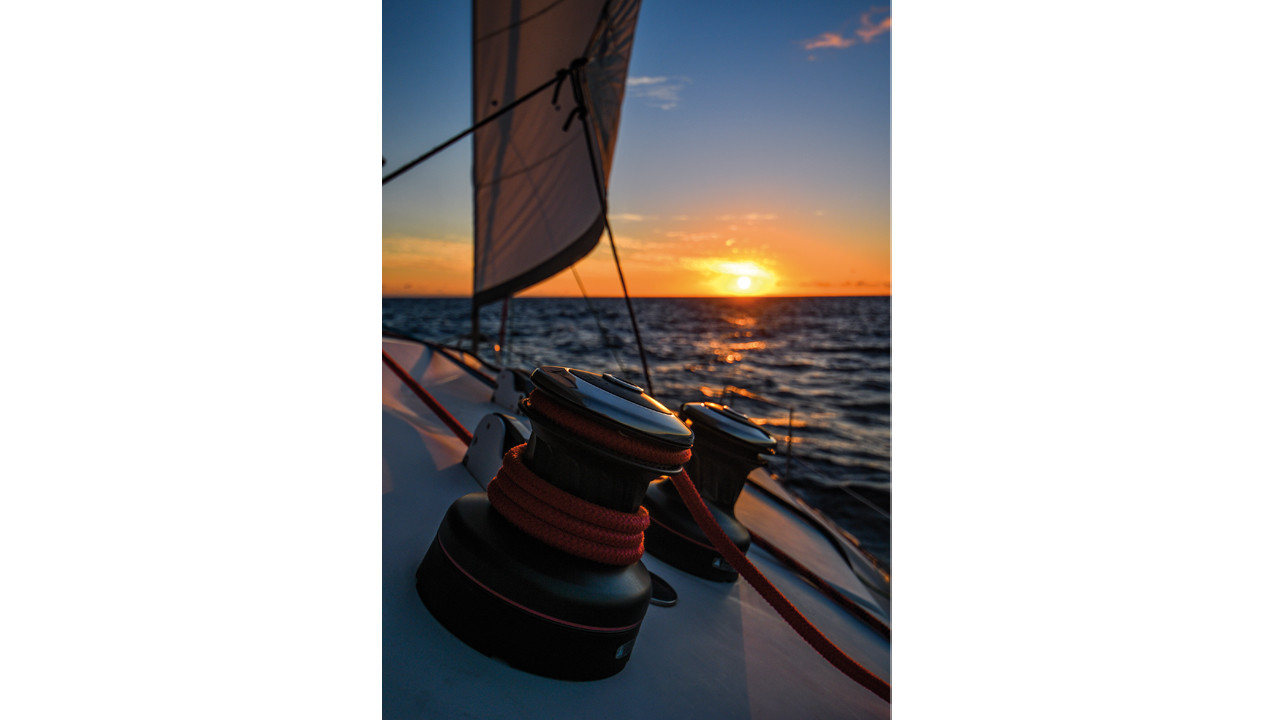
I raised the mainsail and the halyards resonated on the mast. Alain, with whom I shall continue to sail the seas on Tec’Hadenn, indicated that he is ready. We prepared to slip the ropes of the mooring ball. Nouméa slowly drifted away.
Emeline and Nancy, the new owners of « Pirates.com », the catamaran on which I spent my childhood, sailed out with us. We say our last goodbyes. I was pretty emotional, with tears welling up in my eyes… I’m leaving my little New Caledonian social life.
The Uitoe pass lies ahead and then we will be out in open water heading for the islands. I make the most of the last few moments of internet connection to share a few photos and messages. Night is gradually falling, and New Caledonia is now just a mountainous silhouette.
I hadn’t forgotten the amazing skies that I had witnessed during my night watches, but what a treat it was to see the Milky way again through the sails, dotted with shooting stars. And then there is the blue neon glow of the plankton surrounding our hull.
The warm air brushed my face as the music escaped from my headphones. I felt once again as though I was being drawn into a whirlpool of adventure. Ideas bounced around in my head and I mulled over all my projects, which all seemed to come back to the sea. My motivation is always stronger at sea, and it just seems as though any dream is attainable.
My inspiration is back, and the words flow. Once again, I’m immersed in a voyage.
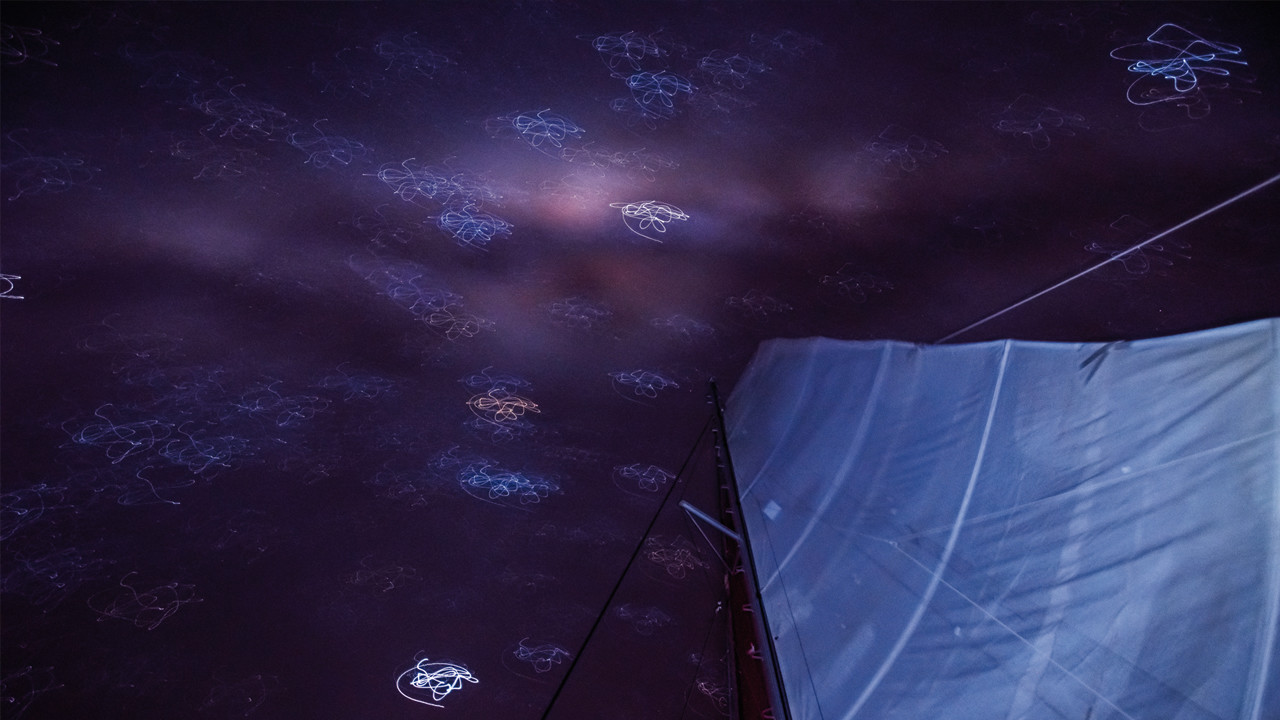
The wind was changeable, but generally behind us. We’ve covered half of our journey. We finished the rest of our meal, saying that it’s time that we tried to tempt a few more fish with our bait. We had anticipated our future catch and had left plenty of space in the freezer. We had perhaps been a little optimistic… However, as if by magic, at that exact moment the reel started to make that familiar sound. I looked across at Alain: he had realized that it will be me again (and I must stress the word “again”) who will win our little competition to see who can bring in the most fish, based upon weight and the quality of the flesh… Well you do need to find ways to pass the time at sea. “You haven’t landed it yet” said Alain…
The reel emptied more and more quickly. It obviously wasn’t a sardine! This was confirmed when I saw the spectacular jumps made by the monster with a long snout which had taken my line.
I fought for around half an hour to get it onto the boat’s sugarscoop. It would take another hour to get the 2.6 meter, 130kg monster on board Tec’Hadenn. After 10 years I had fulfilled my boyhood dream by finally landing a blue marlin!
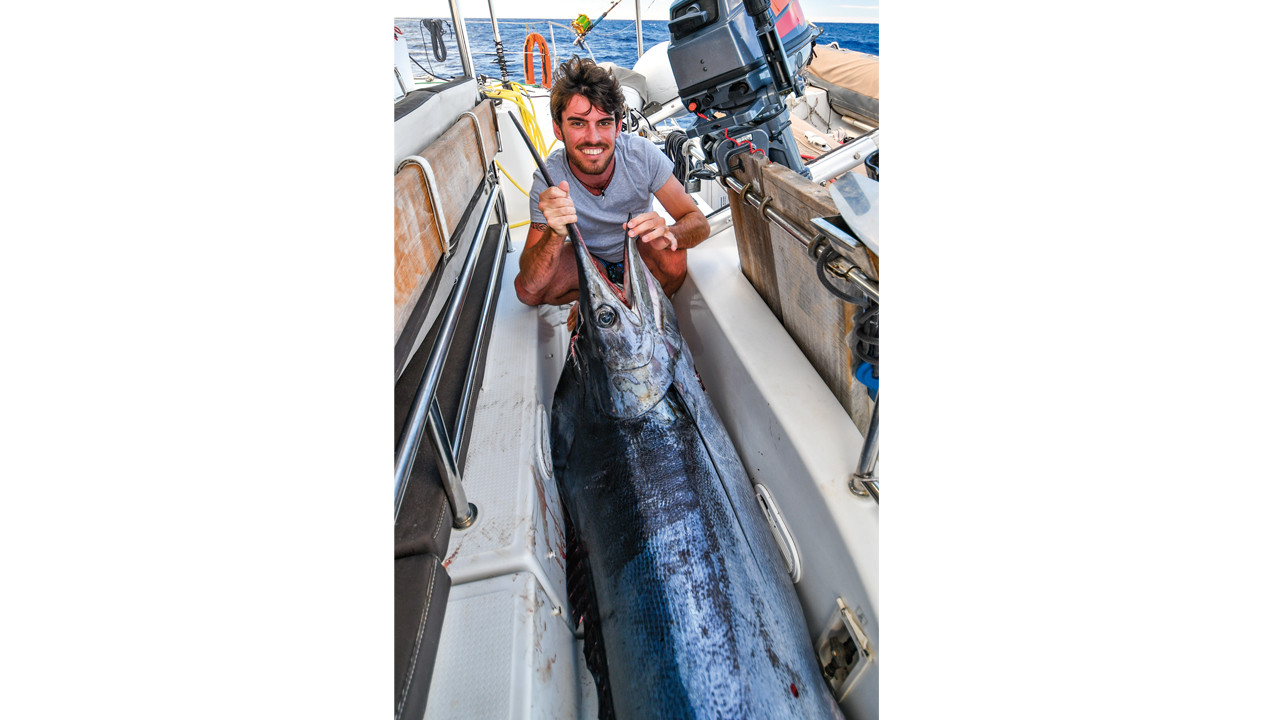
I stroked his head with my hand. I wanted to show my respect for this magnificent animal. It took me the whole afternoon to portion it up. We won’t need our rods for some while! Fishing is a way to feed ourselves on board, and that’s how we treat it .
Almost three hours, from catch to freezer. It’s rare that I’ve spent so much time on one fish! It certainly kept us busy!
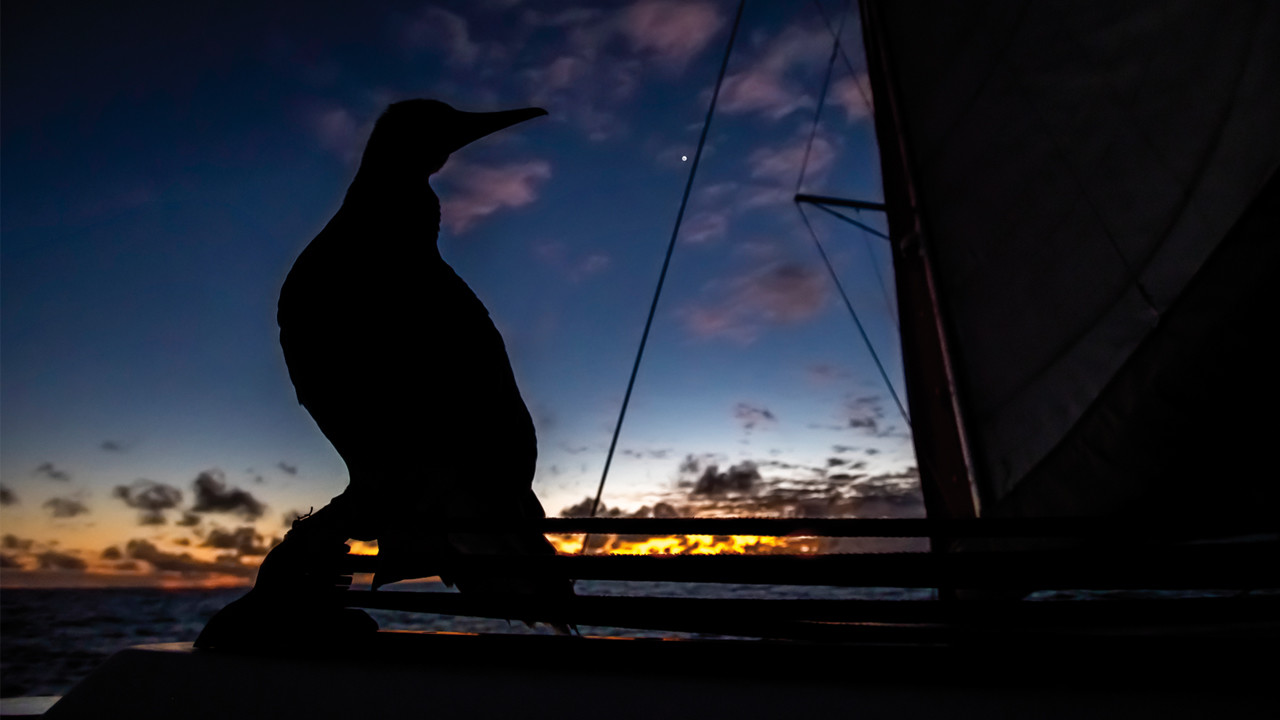
When I finally sat down, a young gannet had settled on the mainsail track. I could have left him alone, but I fancied teasing him a bit with my camera.
As the sun set, he put his head under his wing. After crawling along the deck for over a quarter of an hour to try and get close to him, I finally realized that he wasn’t bothered by my presence. I ended up sat next to him watching the stars, and even managed to stroke his feathers.
It was pleasant sailing, with a 15 knot south-southwesterly wind, with the sea a little lively but still good.
We sailed to the north of the Nereus reef, avoiding the 40 meter shoals which don’t really care for the swell which passes over them.
The Chesterfield Islands will only be another 24 hours if we keep up this pace. Hundreds of birds are already circling above us, and we crossed paths with a group of cautious humpback whales.
The weather forecast had predicted a front moving from the south for our last night at sea. And at the appointed time, the sailing started to get a little lively with a 25 knot wind. We occasionally hit 12 knots, with a constant speed of 9 knots in a heavy sea: two reefs in the mainsail, and a small amount of genoa. We actually had to slow the boat down so that we would arrive in daylight in the highly desirable Chesterfield Islands, as the electronic charts didn’t seem to be particularly precise.
The Chesterfields
Now we needed to decide where to anchor: Long island, Loop Islet? The anchorages need to be chosen based upon the protection they afford, as well as their beauty. I love this moment, when we have to choose which desert island will be our home for a few weeks… We finally decide using the best method: we’ll try them all!
The Chesterfield Archipelago, which belongs to New Caledonia, is formed from two distinct atolls: the Bellona islands and reefs to the south, and a few small groups of islands to the north, namely Avon Islets, Loop Islet and Long island
This natural reserve is reputed to have the highest density of marine turtles in the world. On one night, a scientific vessel counted the traces of over 500 turtles on one small island during the egg-laying season, which begins in November.
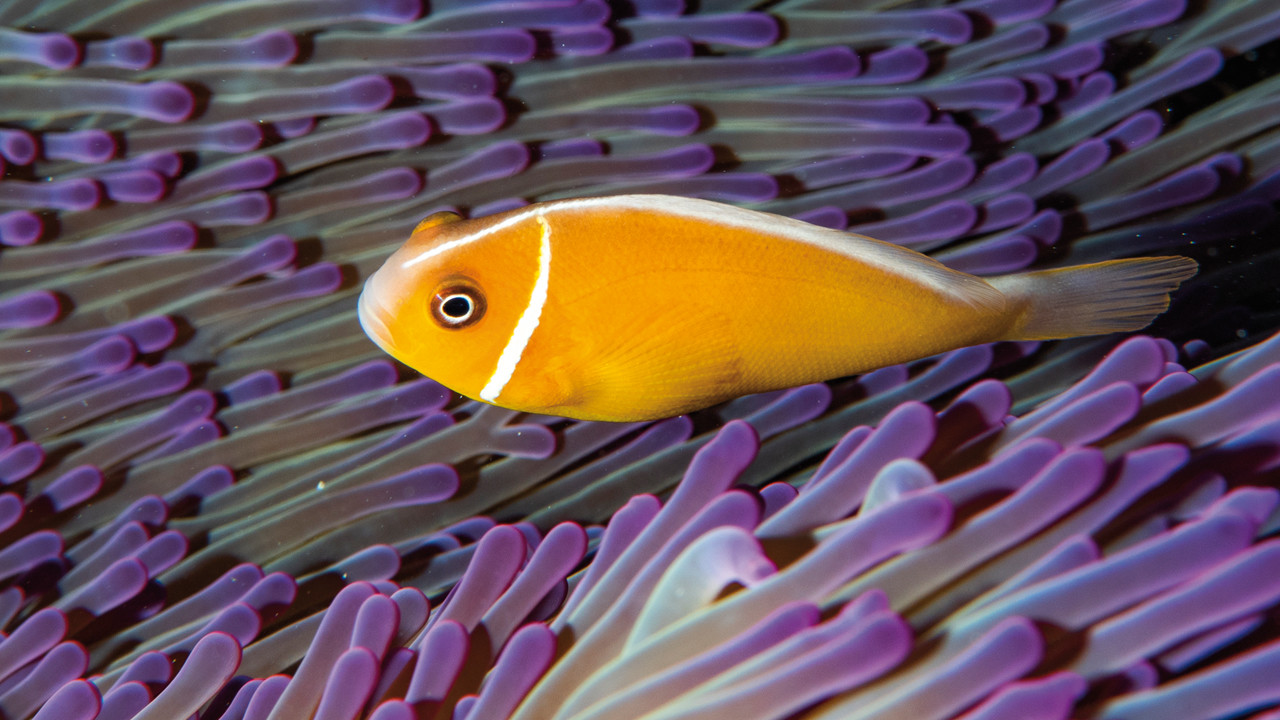
It was August… with a bit of luck, there may be a couple of unusual turtles that couldn’t hold out before getting down to business, and I’d be there to witness a magnificent night of out of season egg-laying! Ok it’s a bit far-fetched, but I can dream!
These islands are also home to a phenomenal number of shrieking seabirds. But they are wonderful to look at!
The day finally dawned, and the last night watch was done. We arrived in the late morning. The sea was choppy, and we couldn’t wait to get there and get some rest.
At 1pm we dropped anchor in the most crystal clear sapphire sea. I can already see myself spending all day in this exceptional bathtub. To begin our stay in the Chesterfields, we had decided to anchor to the east of the atoll, to be protected from the prevailing tradewind.
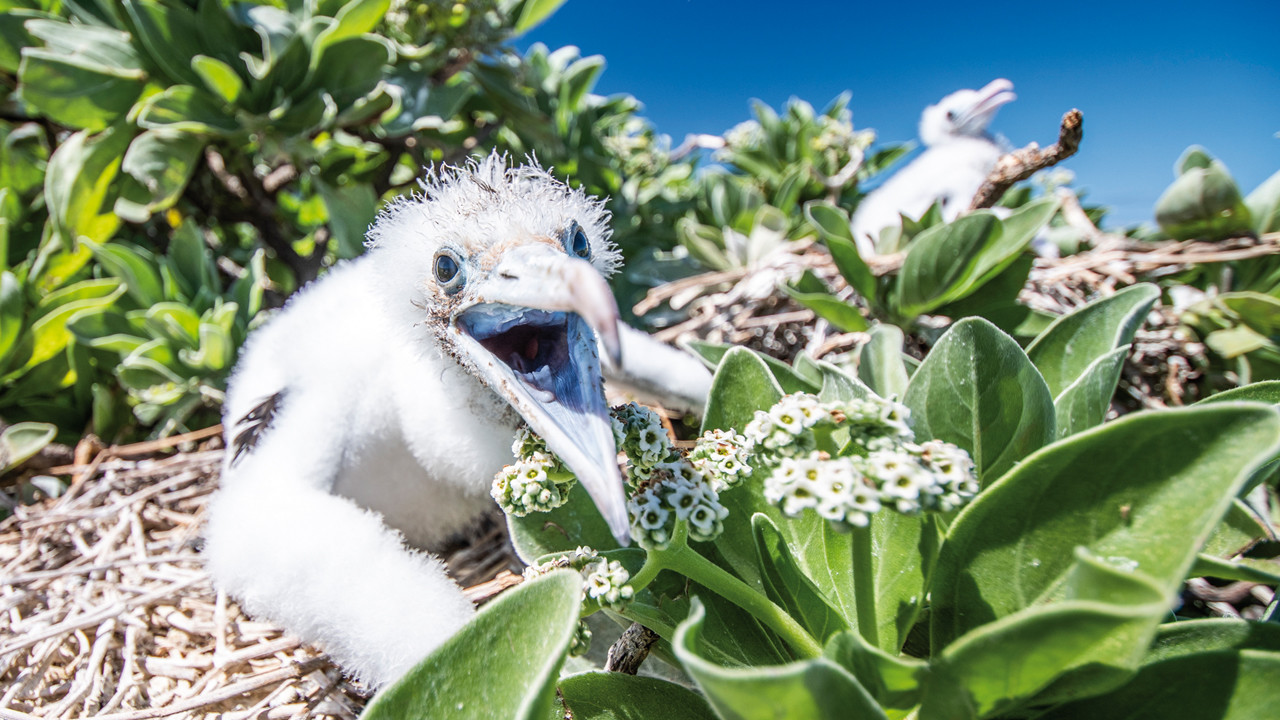
The sky was dark with birds: gannets, noddys, sterns and frigatebirds live side by side amidst a cacophany of strident cries and a heady aroma of guano. All the big guns are out. Cameras and drones are ready to start shooting. Despite wanting to have a sleep, I take a quick dip in the water to see what will be waiting for us. I wasn’t disappointed: there was an unbelievable variety of fish, as well as healthy-looking corals. The sand was littered with sea cucumbers, which play an important role in the marine ecosystem, filtering particles out of the water.
We didn’t see a single cloud that first day in the Chesterfields. And then… I lifted my head and saw something truly amazing. Around a hundred meters from the boat, there was a body. Or was there? Surely not! I shouted, screamed and waved at Alain to get his attention. Whales! Humpback whales!
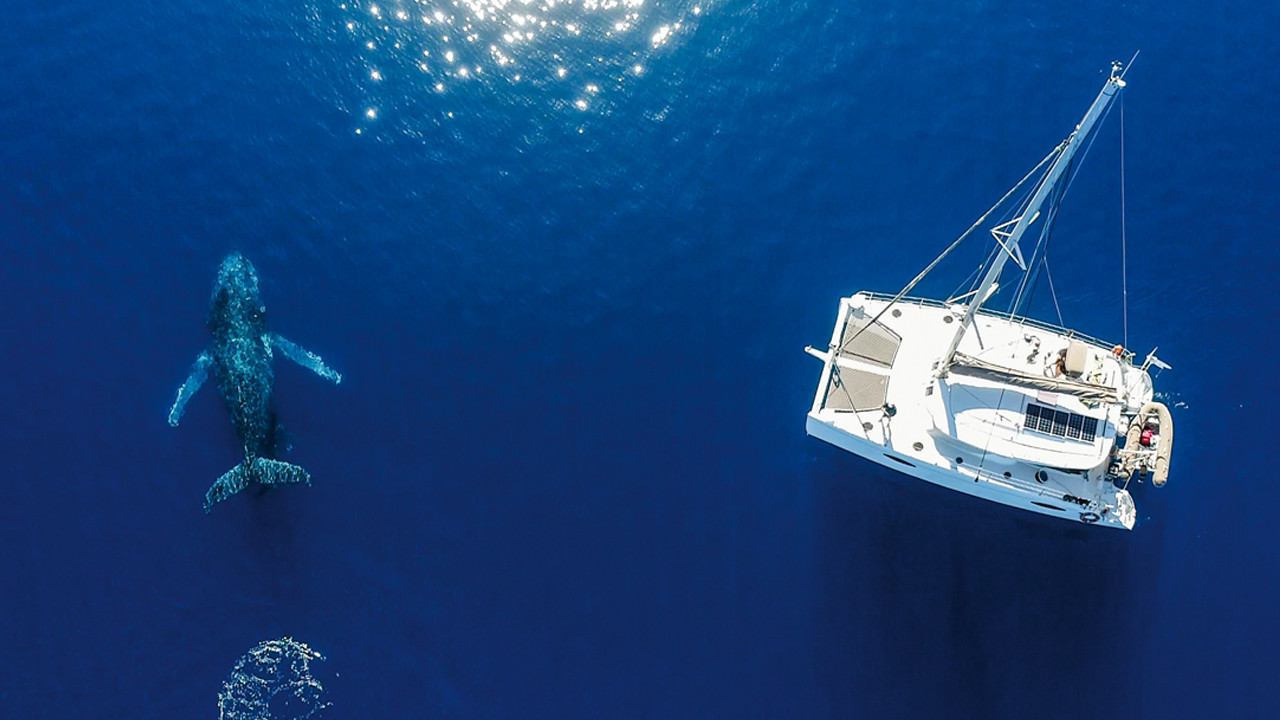
They were swimming slowly in around 15 meters of water, close to the catamaran’s sugarscoops. Overexcited, we jumped into the dinghy to get over to them, and I prepared to get into the water. I suddenly saw them through my mask, a mother and her calf. The two dark objects came closer, startled by my presence. With a quick spin, the mother showed me her perfectly white belly. The youngster seemed to wink at me. One flick of the tale and I ended up tens of meters away. We followed them for a while with the dinghy before letting them head away.
I was stunned. Not bad for a first day in the Chesterfields…
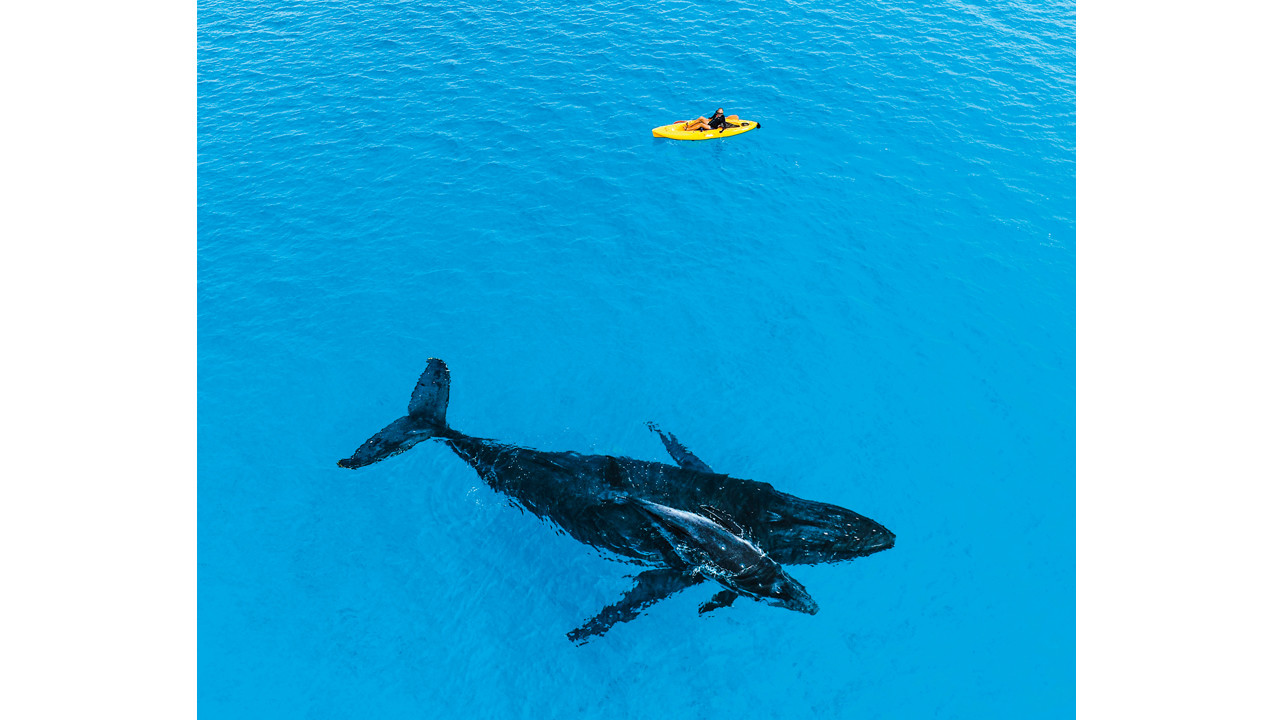
My parents had just arrived from the north of New Caledonia. I’m impatient to let them know that there are whales in the atoll. They’d hardly dropped the anchor from “Black Lion”, their catamaran, when more giant whales arrived. We set off together this time, and spent more than an hour with them. We probably didn’t realize what an incredible scene we were witnessing.
A Tiger Shark came close to the catamarans that afternoon. A distinctly less friendly visit, especially when it comes to getting back in the water.
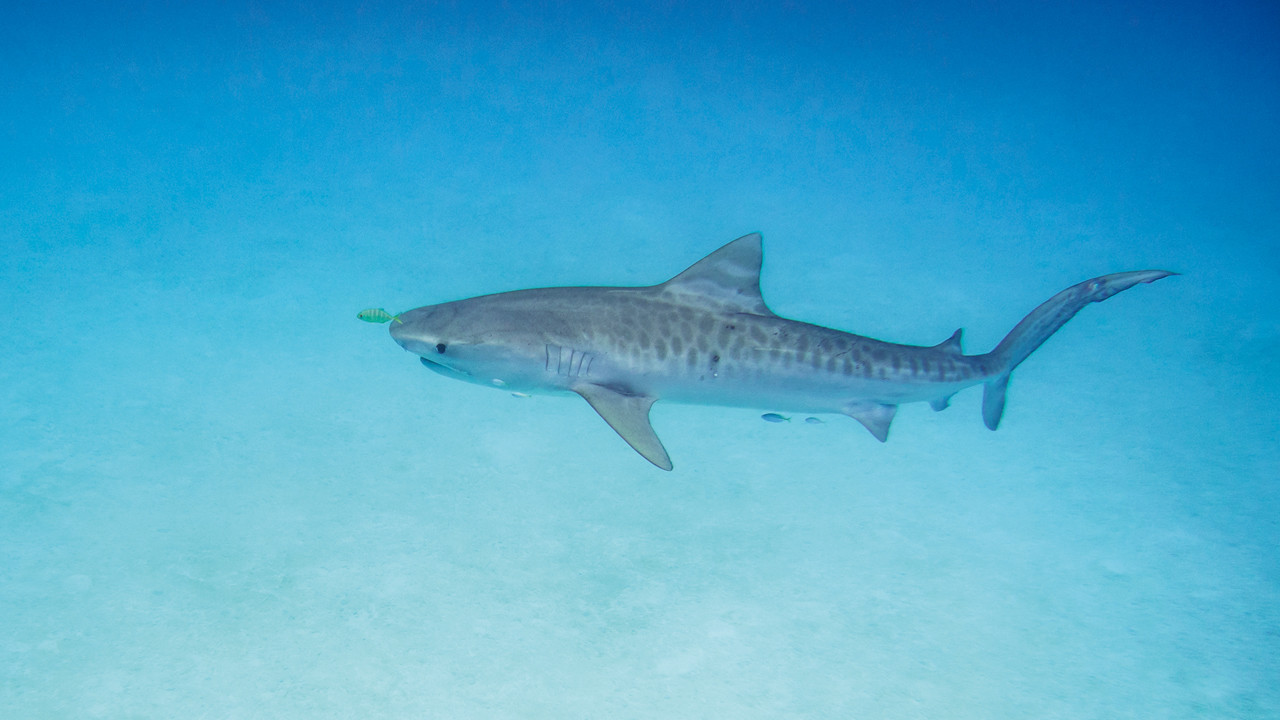
The days came and went. We dived for around 4 consecutive days with the whales, with some time spent on the fabulous beaches of the islets. The dives are our favorite pastime. We are convinced that we are experiencing some unique moments with just the whales for company. We even ended up giving them names. They were starting to become our friends! Spending so much time with them, we felt that we were beginning to get to know them. A truly remarkable experience!
After a few days the weather became a bit miserable. Thankful to have been able to experience the whales, we had a few days of lie-ins and just not doing much. It’s an ideal time to do a bit of writing and to go through the 1500 photos that I’ve already taken, and which will soon clog up my disks if I don’t sort them out…
Two days went by. The wind dropped and the thick cloud cover that had been hanging over our heads disappeared over the horizon.
The sea calmed down, lost her ripples and became a mill pond, with the sandy beaches reflected in the undulating water.
Our anchorage became a natural swimming pool in which dolphins came to meet us, totally unfazed with our being there. Small groups of them slowly break the surface of the water, almost appearing to fly a few meters off the ground. We cross each other every now and again. Friendly and understanding, they then head off out into that wonderful turquoise expanse…
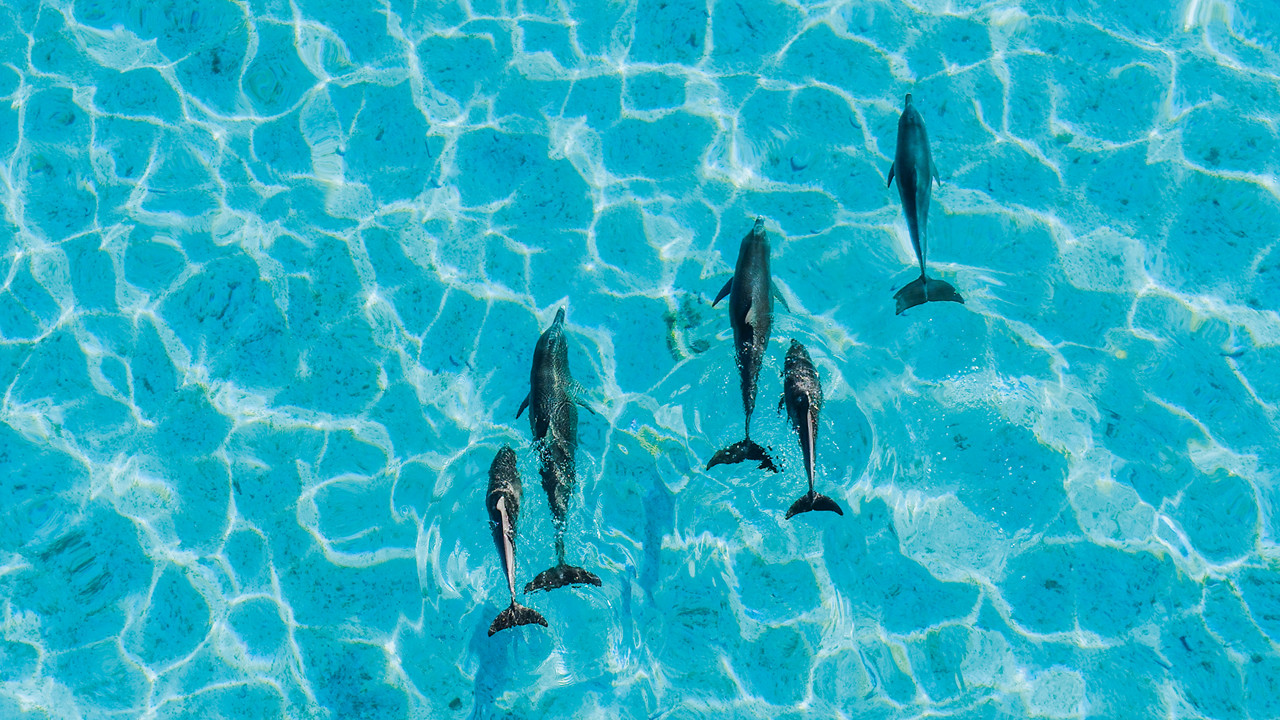
The terns, with their high-pitched cries are extremely noisy. However, I can assure you that we aren’t complaining. I counted seven types of seabirds on the islets, two of which were sulidae, the masked booby, easily recognizable with its magnificent yellow beak and eyes. They nest in the sand, unlike their cousin the red-footed booby which nests in the trees.
The frigate birds are more discreet and stay further away, only coming closer to their neighbors to steal fish that has been freshly caught by the black noddys.
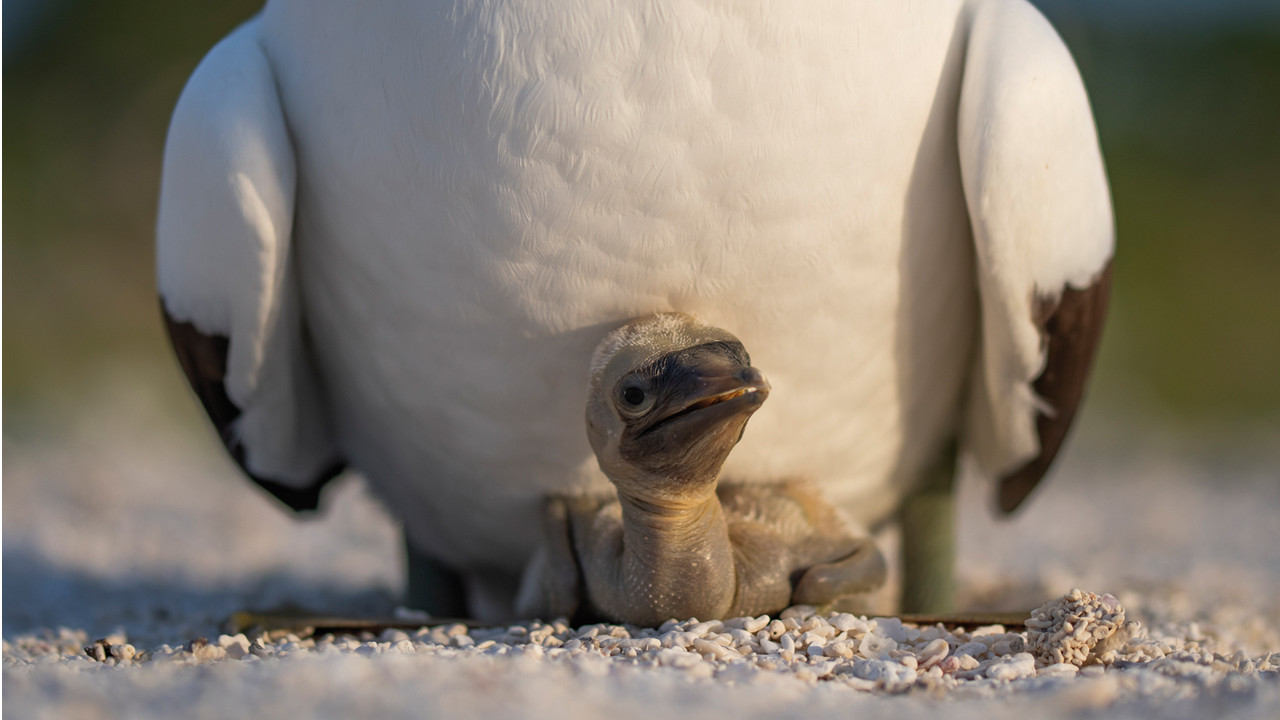
We followed the progress of freshly hatched juvenile birds: there are often two eggs in the nests. The stronger youngster survives whilst the other one dies more often than not… It’s the sad reality of natural selection and the survival of the fittest. This little, naked, frightened bird, still without any feathers, will grow to become an adolescent, with a few feathers on its chin and under its wings. It’s an insolent child, demanding warm food from its parents with its shrieking cry. The soft down of the duvet rapidly becomes a proper plumage. It’s quite funny to see them with their dense toupee-like feathers on their heads. It’s a real fashion show with a selection of wacky 21st century hairdos. In a short while, the first real feathers will appear, the beak will become yellow and its body will become more tapered.
It will soon be time for them to leave the nest and join their extended family, and experience storms, winds and wild seas whilst looking for the delicious flying fish, and then to return months later (or maybe not), exhausted by its adventurous exertions.
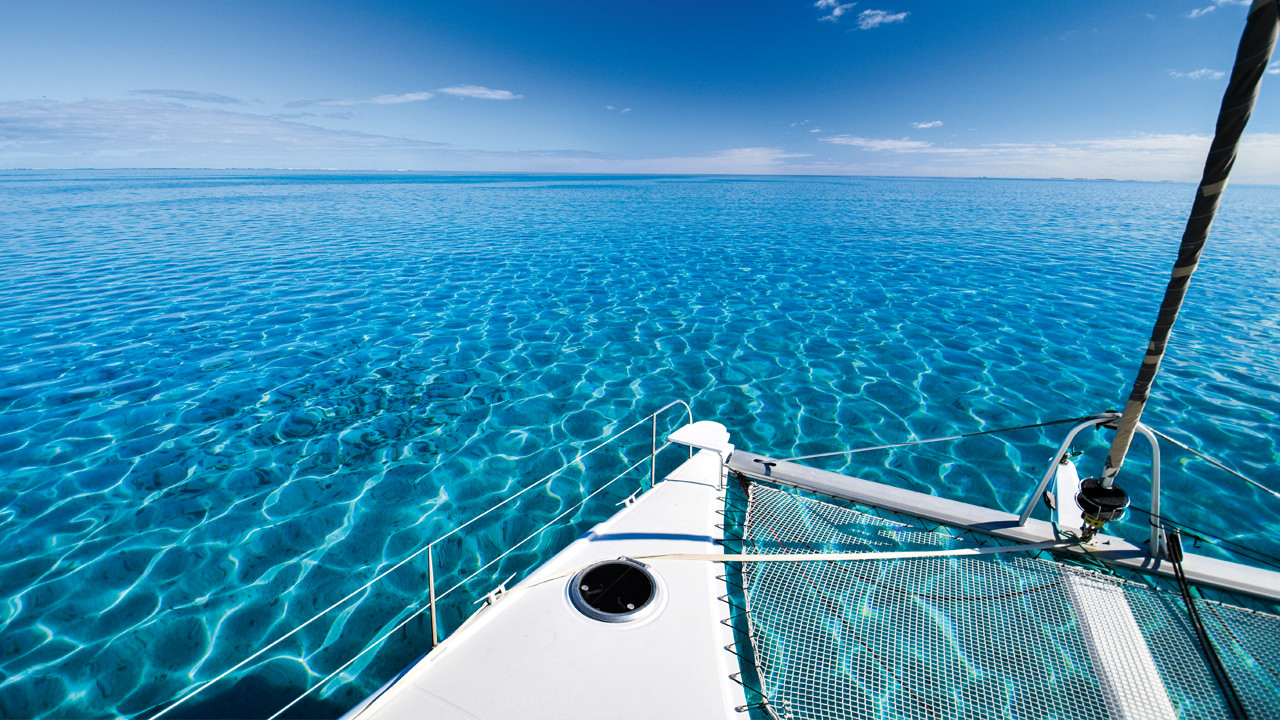
After a few days in the Chesterfields, we felt completely exiled from modern life. Our only problems were deciding whether to go swimming with the whales, or to look for treasures on the beaches… And then one morning we were joined in our anchorage by a young French couple who had recently set out on their lovely monohull. They were experienced divers and scientists. We got on well together and had an excellent time with them.
Mum’s Birthday…
September 1st is always a special day as it is the birthday of my wonderful mother, who was on the boat next to me in our anchorage! With two dinghies, the 6 of us from the 3 boats set off for one of the islets, to have a picnic and to do some scuba diving. The sea floor is magnificent. There are gray sharks, shoals of barracudas, sea snakes everywhere and the amazing variety of corals is a feast for the eyes. Suddenly, at a depth of 18 meters, a whale brushes by us where there is a coral overhang. We were dumbfounded as we had not expected this at all. And then she slowly came back again before melting into the depths. When we don’t go to see them, they come to see us… What a birthday present!
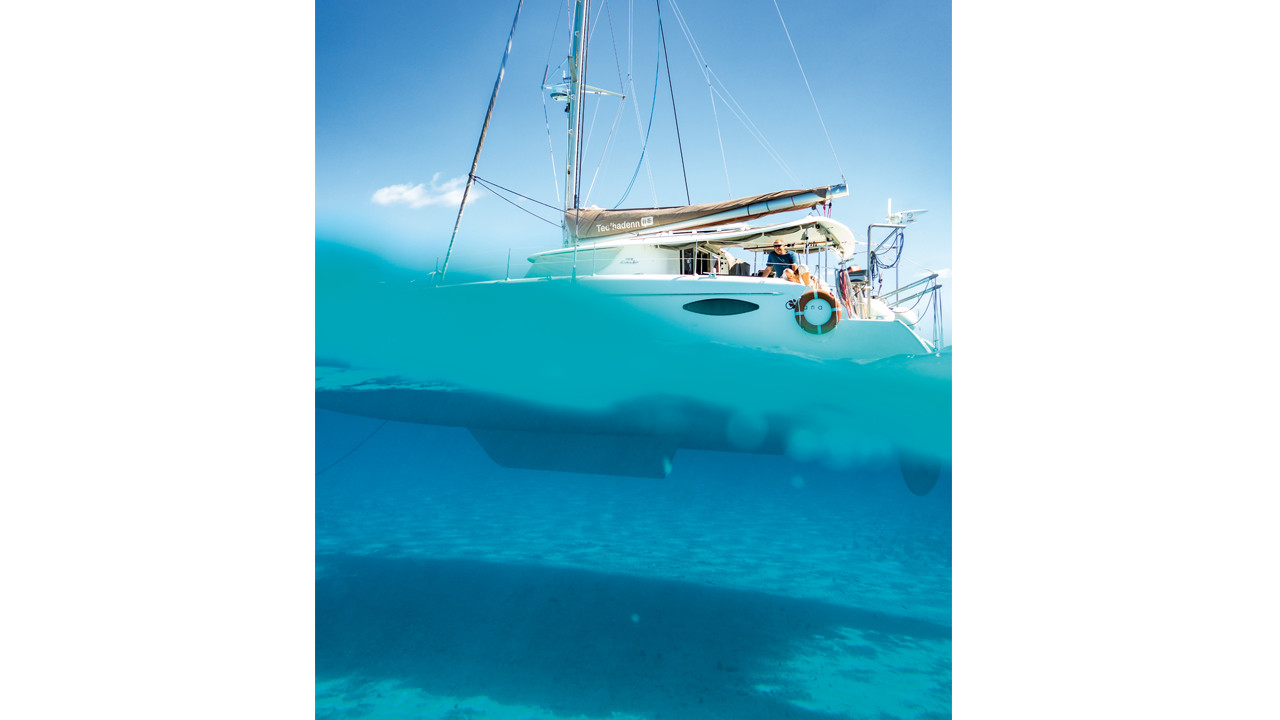
The beach is just as lovely as the other islets. I spot a different-looking rock sticking out of the sand. I dug a little to uncover it completely and realized that it wasn’t a rock but brick. A few years previously, my parents and I had met a couple in Venezuela who had discovered a 16th century shipwreck. They explained that the ships used to be ballasted with rectangular bricks. This seemed to make sense when looking at the lovely brick in my hands. Getting excited, we started to root around the stones buried in the sand… One, two, three bricks. It looked as though we had found a wreck. A few pieces of rusted metal and some very old whale bones. We thought about how the wreck could have ended up on this desert island, and what its story was. The general feeling was that it was probably a whaling ship from the end of the 19th century. We had heard stories of people finding bottles of Japanese whisky, a common drink on the boats of that time. And I did indeed find the bottom of a square bottle with a clear inscription: NIKKA WHISKY, where the boat went down. It was indeed a bottle of 19th century Japanese whisky. This time we really were finding treasures!
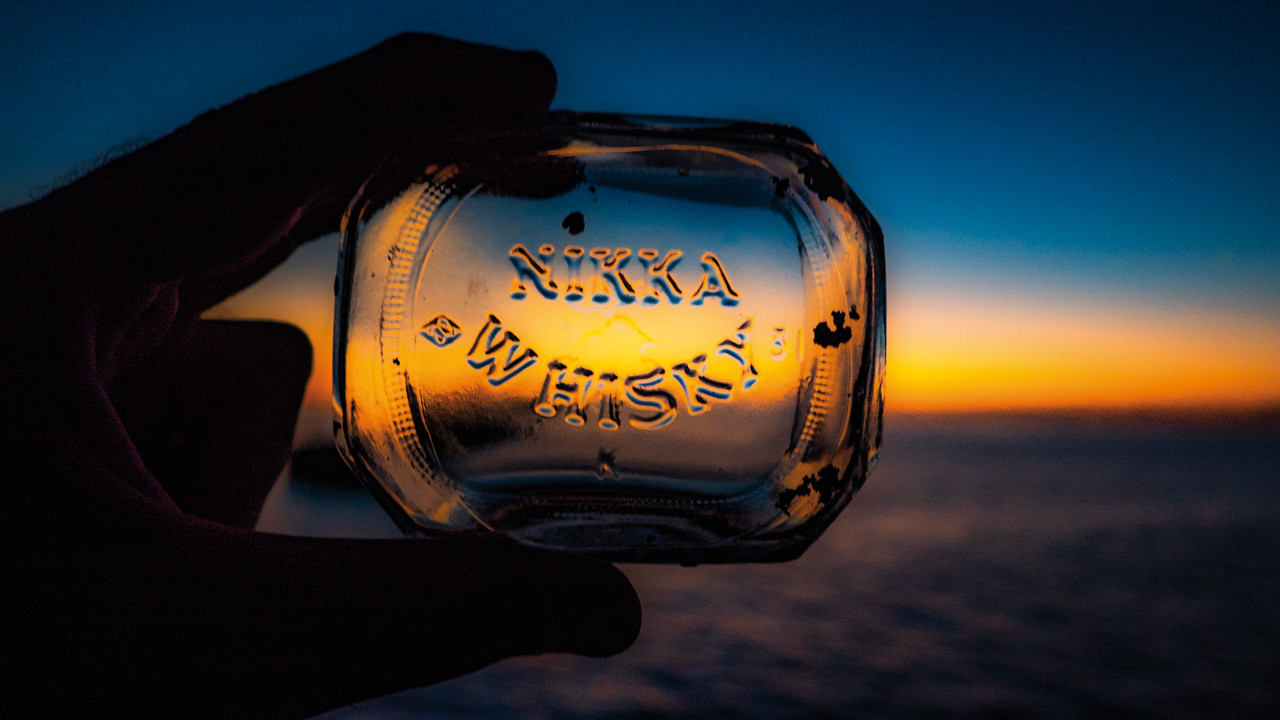
A few days later we came back and went scuba diving between the beach and the coral reef. We were hoping to find some more interesting traces of the wreck, but this time there was no success. But I considered my piece of bottle and my brick to be genuine trophies and I took them with me…
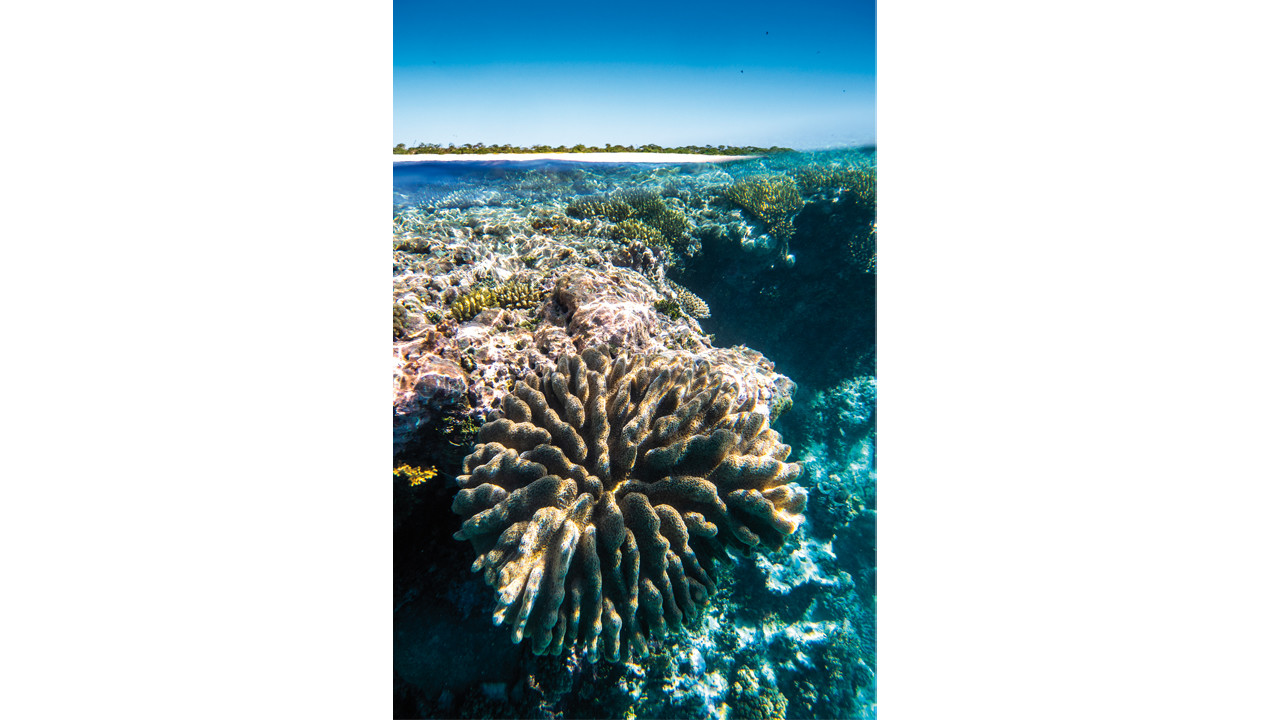
And Then It Was Time To Leave…
We had a weather window for the journey to Australia… We had to leave this deserted paradise some time. It was tough to leave, but if we didn’t make a move we’d never get away. And if we were sort of self-sufficient in our Pacific Eden, we would still need to get some supplies on board some time. We really enjoyed our time in the Chesterfields and don’t regret our trip at all.
4th September 2018: it was time to weigh anchor and leave our paradise behind. It was very tough to head out through the channel. We knew that it would be very hard to find a place like that again. But one thing is for sure: we’ll go back there one day. For sure? For sure!
What readers think
Post a comment
No comments to show.